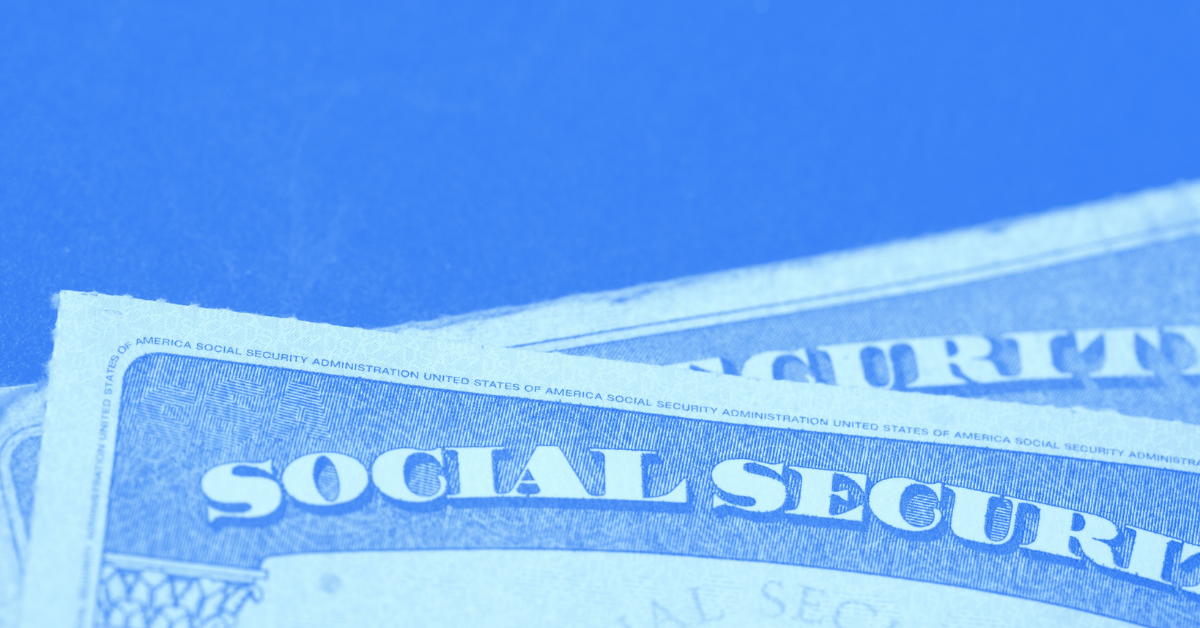8 Benefits Of A 401(k) You Might Not Know About
Share this
%20you%20might%20not%20know%20about.png?width=554&name=8%20benefits%20of%20a%20401(k)%20you%20might%20not%20know%20about.png)
7.5 MIN READ
There are many benefits of 401(k) plans, and some are less known than others. A 401(k) is a type of retirement plan offered by an employer in which the employee can defer part of their paycheck into a retirement account to grow for their retirement years. Many people have access to a 401(k) retirement plan. 401(k) accounts have limits on what the employee can add, and the total that can be contributed to the account during each tax year. Now let’s get into some 401(k) benefits you may not know about.
What is a 401(k) plan?
A 401(k) is a retirement savings and investment plan that some employers offer to employees. Employers can offer a 401(k) as part of their benefits package where an employee can contribute a portion on their paycheck to their 401(k) and then the employer may match a portion of the employee’s contribution. The annual contribution limit for a 401(k) for 2021 is $19,500 ($26,000 for those age 50 or older). If you are self-employed with no employees, then you can have a similar account called a Solo 401(k).
Is 401(k) a good idea?
A 401(k) plan is a great way for employees to save for retirement. If you are fortunate enough to work for a company that offers a 401(k) and you have extra money that you can save then it’s something you should consider. Below we discuss the 8 401(k) benefits that you might not know about.
1: 401(k) tax benefits
One of the major benefits to using a retirement account to save for retirement (rather than a taxable account), is that retirement plans have tax benefits that taxable accounts do not have. All 401(k) plans allow employees to save on a pre-tax (traditional) basis, and many also give the option for you to save on an after-tax (Roth) basis.
If you choose to contribute your money into a traditional 401(k), the contributions are tax-deferred. This means it will lower your current taxable income now, and the money is added to your 401(k) account on a pre-tax basis (no income taxes have been paid on them yet). This money will grow tax-deferred until you withdraw the funds in retirement. At that time, you will pay income taxes on the money you saved, as well as the growth, as you withdraw the funds.
Alternatively, Roth 401(k) money is post-tax money. You pay regular income taxes on your paycheck now, before adding the funds to a Roth account. The money in the Roth 401(k) account then grows tax-free. When you withdraw this money in retirement, you will not pay any income taxes on the funds you withdraw!
Either way you go, you are getting a tax benefit. You are either saving on taxes now or later. Read our blog about Roth 401(k) vs Traditional 401(k) to learn more about each option and decide which is best for you.
2: 401(k) match benefits
Many employers will also offer a 401(k) match. What this means is that the employer matches your contributions up to a certain percentage of your salary. If you put that percentage in, the employer adds the same amount to your 401(k) for you out of their pocket. FREE money alert!
The match may look something like this: “Employer will match 50% of employee contribution up to 7% of salary.” This means that you need to put 7% of your salary aside into your 401(k) to receive the full match, which will equal 3.5% (half of your contribution) of your salary. It may also say something like this: “Employer will match 100% of employee contribution up to 5% of salary.” This means you put 5%, and so does the employer. These matches can have many different variations, but any type of match or flat contribution is free money into your account!
3: If you change jobs, you can take your 401(k) with you.
It is a common misconception that if you leave a job, you need to cash out your 401(k) or lose it. There are actually a few options for those who leave jobs and have a 401(k) with the company they’re leaving. Some options may include rolling it into your new 401(k) plan, leaving it with the old 401(k) plan and simply managing the investments, or rolling it into an IRA.
Avoiding cashing out your 401(k) when you leave a job is important. This is your savings for retirement, and cashing it out will stop the growth and undo all of the hard work you did to put the money there in the first place. There are many options for what to do with your 401(k) when you leave a job.

4: 401(k) compound interest
In the last example, I said cashing out the 401(k) will stop the potential growth. What I am talking about is this: compound interest. According to Einstein, “Compound interest is the eighth wonder of the world.” For your 401(k), compound interest comes from the dividends and potential increase in price of the funds you invest in. It might sound confusing, but it really is powerful. The younger you start to save for retirement, the more time your money has to grow. Compounding can have a big impact on long-term investment.
"The younger you start saving for retirement, the longer your money has to compound. Things like what you invest in and fees can make a difference, so ensure you know your options before deciding on your 401(k) investment portfolio."
5: Easy payroll deductions
I am a big fan of making life easier and more efficient when possible. The great thing about a 401(k) plan is that after your initial setup, you don’t have to continue to tell HR to take money from your paycheck and add it to your 401(k). Unless you want to make a change, your contributions should remain constant each pay period.
Most plans will allow you to pick a percentage of your paycheck to go to your 401(k). Some will also offer the option of a flat dollar amount. I recommend choosing a percentage, because as you make more money at your job, your contribution will automatically increase as a percentage of whatever your salary is at the time the money is pulled out of your paycheck.
For example: If your salary is $60,000 when you begin work at your new job, and you put 10% into your 401(k), HR will take $6,000 over the course of the year (divided by however many paychecks you receive) out of your paycheck. If, after a year you get a cost of living raise of 3%, your new salary will be $61,800. Your new 401(k) contribution is $6,180. If you had simply started the job putting your contribution as a flat $6,000 instead of a percentage, it would remain at $6,000. Those small increases can make a huge long-term difference (remember compound interest), so when you get a raise, your 401(k) should automatically get one too!
6: 401(k) fiduciary benefits
The Employee Retirement Income Security Act (ERISA), sets standards of conduct for all employer sponsored retirement plans. One of the requirements is that those who manage an employee benefits plan and its assets must act as plan fiduciaries. Some of the responsibilities of the plan fiduciary are:
- Acting solely in the interest of plan participants and their beneficiaries and with the exclusive purpose of providing benefits to them;
- Carrying out their duties prudently;
- Following the plan documents (unless inconsistent with ERISA);
- Diversifying plan investments; and
- Paying only reasonable plan expenses.
What does this mean for you as an employee? Your plan assets are being managed in the best interests of the plan participants. Every plan must have at least one fiduciary. And this fiduciary must follow the rules set out by ERISA. For example, they cannot charge exorbitant fees, or only have high-risk, high-cost investment options.
What does this not mean? It is not a guarantee that your invested money is protected from stock market downturns.
7: Emergency benefits
In general, 401(k) and other retirement plans are meant for retirement. In the eyes of the IRS, the magic age at which you can begin withdrawing from this account without incurring a 10% penalty is 59.5. Ideally, plan participants should wait at least this long before using their retirement savings. However, sometimes this isn’t possible. And if a major life event happens and you need access to your 401(k) assets early, there may be options available.
401(k) plans generally have loan or hardship withdrawal options. In general, loans are limited to 50% of the vested balance, up to $50,000. Usually, loan payments will be made back into your 401(k) plan as an automatic payroll deduction. You must pay the loan back by the next tax-filing deadline if you leave your job, or it will be treated as an early withdrawal, and a 10% penalty plus income taxes may apply to the loan balance.
Hardship withdrawals can also be made for emergencies like death, disability, and medical expenses. These withdrawals will be taxed, but may avoid the 10% early distribution penalty. Each plan has their own rules for these options, but must follow IRS guidelines in what is allowable.
8: Shelter from creditors
ERISA funds (qualified employer-sponsored retirement accounts like 401(k) plans) are generally protected from creditors. In the event you need to file for bankruptcy, or you owe a creditor a large amount of money, the creditor cannot go after your plan assets regardless of how much money you have in there.
The two exceptions to this are: if the creditor is the federal government, or if you owe money to an ex-spouse in a Qualified Domestic Relations Order. Your funds can be seized to satisfy these debts.
401(k) plans are a great way to save for retirement.
401(k) plans are the most popular employer-sponsored retirement programs in America. You now know 8 benefits of a 401(k) plan that you may not have known before. Are you unsure of how much you should be saving? Or of which investment options to choose? Hiring a fee-only, fiduciary financial planner might just be your best next step in your financial journey. Book a free discovery call with one of our financial planners today! We also have ‘A Beginner’s Guide On How To Start A 401(k)’ which you may find useful.
 About the Author
About the Author
Alvin Carlos, CFP®, CFA is an investment advisor and fee-only financial planner, in Washington, D.C that works with clients across the country. He has a Master’s degree in International Relations from SAIS-Johns Hopkins. Alvin is a partner of District Capital, a financial planning firm designed to help professionals in their 30s and 40s achieve their financial goals through smart investing, reducing taxes, retirement planning, and maximizing their money.
Did you know XYPN advisors provide virtual services? They can work with clients in any state! View Alvin's Find an Advisor profile.
Share this
- Good Financial Reads (921)
- Financial Education & Resources (892)
- Lifestyle, Family, & Personal Finance (865)
- Market Trends (114)
- Investment Management (109)
- Bookkeeping (55)
- Employee Engagement (32)
- Business Development (31)
- Entrepreneurship (29)
- Financial Advisors (29)
- Client Services (17)
- Journey Makers (17)
- Fee-only advisor (12)
- Technology (8)
Subscribe by email
You May Also Like
These Related Stories

Double Dipping: How to Take Social Security While Still Getting Paid
.png)
How Do Stock Options Work? Everything You Need To Know!

